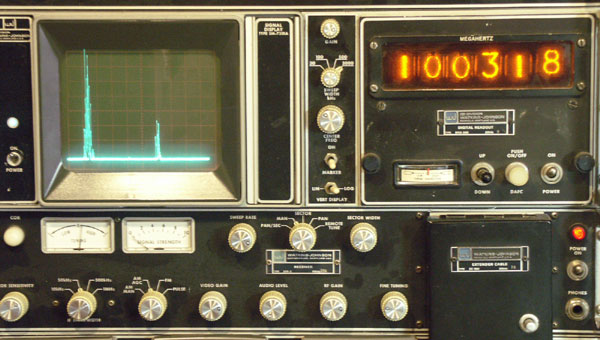
 |
|||
| WJ-CEI Home Page | My Publications | Research Material Donations | Bio and Contact |
Communication Electronics Technology |
| WJ-CEI Receivers & Tuners | WJ-CEI Signal Monitors | WJ-CEI History | WJ-CEI Catalogs |
| WJ-CEI Surveillance Systems | WJ-CEI System Accessories | WJ-CEI Related History | WJ-CEI Resources |
RS-160 Receiving System |
WJ 1970 catalog (p 10) |
 |
||||||||||||||||||||||||
SM-7301 SDU, DRO-308 counter and 205-2 receiverThe RS-160 is an amazing system. Building a complete version is a difficult task as they were usually sent to the surplus market piecemeal. |
||||||||||||||||||||||||
Available tuners
|
||||||||||||||||||||||||
Other optionsThe RS-160 is a highly customizable system. They were produced for many years in many different configurations. It can be as simple as a receiver and one tuner with a Tektronix 604 X-Y display for pan/sec or an even larger and more complicated than the picture at the top of this page. The main receiver can be a 205, 205-2, 215 or any of the myriad of 205-x variants that were made. The 215 receiver can be operated with an FS-101 frequency synthesizer for digital remote control. The main difference between the 215 and the 205 series is extensive interfaces for remote control inside the 215 presumably by a PDP-11 based system. The frequency readout can be a Nixie display DRO-308 with or without the DRX-308 frequency extender or a newer LED display DRO-335. Systems with multiple receivers could use the VM-101 marker generator which allows any receiver with a 21.4 MHz IF to display a tuning pip on the RS-160 display. In this manner, an intercept operator could quickly hone in on a suspect signal. This is essentially an early, non-digital version of the "handoff" feature popular newer surveillance radios. Up to five receivers could be connected to the VM-101. See the Receiver Guide for more information on the receivers, the Systems Guide for more information on the RS-160 and the Accessories Guide for more information on the various parts. |